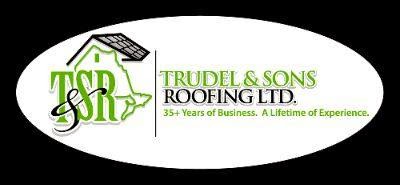One of the most common and expensive issues homeowners call a contractor for is to fix a leaky roof. However, even for a pro, the source of a leak in your roof can be elusive because it rarely matches where the water is entering the home. Your contractor then becomes an investigator trying to identify the source of a leaky situation and determine the path in which the water is traveling. The good news here is that all of this frustration can be avoided by following a proper maintenance program that should be performed at least twice a year to help avoid future problems.
Before an inspection, ensure you take a look around from the ground level and make your contractor aware of any recent extreme weather, leaves, falling debris, trees, animals around the home, satellite or cable work, or additional accident causers that may have damaged the roof.
Once on the roof, keep these 5 simple tips in mind so you may locate future leaks and problem areas before they cause further costly damage.
2. Your Roof Isn't Bullet Proof. Penetrations are the most common source for leaks and will block the natural water flow off your roof. Check to make sure:
- Your chimney doesn't need to be re-sealed and has the proper flashing/counter flashing
- If you have a skylight that it is properly flashed and is not leaking itself
- The neoprene/rubber around your plumbing vents has not cracked with age and is not in need of flashing
- Your satellite or cable cords are flashed properly
3. What's on the Inside Really Does Matter. More often than not, homeowners will blame the roof for being the cause of a leaky roof, but the problem can also come from improper air conditioning, ventilation, plumbing, condensation, vent fans, or animal bug infestation in the attic. Keep your eyes peeled for:
- Mold
- Wet insulation when there hasn't been rainfall
- Algae stains on interior plywood
- Blockage in the intake vents from paint, dust, spider webs, or insulation
- Lack of ventilation which causes the attic or overheat/accumulate moisture
- Black rings/rust around nails - the first sign of condensed moisture in your attic space
4. Big Foot. Areas where step flashing should be installed are a common source for roof leaks and a huge part of maintenance. Inspect these areas for damage:
- Roof-to-wall transitions
- Wherever low quality sealant/mastic has been used
- Dormers
5. The Gutter Counts When it Comes to Your Roof. Most homeowners completely underestimate the value of their gutters. They must be installed and sloped correctly to drain, free of debris, and tightly fastened. Contractors should always stress to homeowners the importance of gutter maintenance and that it should be left to a professional.
This is our basic list of maintenance suggestions, however, Trudel and Sons Roofing offers a full comprehensive roof inspection when quoting or beginning a contract. A thorough inspection, performed regularly by a professional roofing contractor, can monitor the roof's condition and help prevent small problems from becoming major roof leaks.



No comments:
Post a Comment